Part pop art, part riddle, and all wonder, Ana Prundaru’s playful collages capture the delicious essence of summer. Imagination is key as you watch an ocean of blueberries float by, the sun transforming into an egg yolk, and gusts of flowers, butterflies, and fish float through in these pieces. Art Editor Arah Ko and Associate Art Editors Heather McCabe and Cat McMahan interviewed Prundaru about creative inspirations and methods
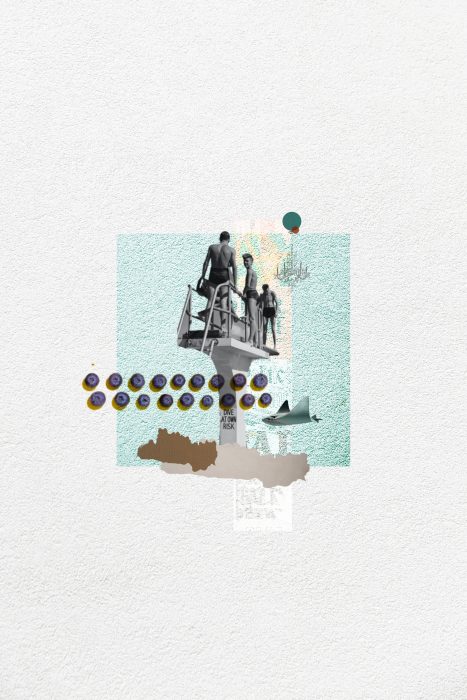
Arah Ko: Can you tell me a bit about your creative process? Where does your work on a piece begin, and does its transformation and layering ever surprise you?
Ana Prundaru: Many ideas for collages are prompted by a song, or a piece of writing. I free-write my response to, or interpretation of it —unsurprisingly, through the lens of my experiences. Usually, at least one overarching theme emerges. In the next step, I gather fitting images. For example, I consider the best texture to express a certain emotion. At that stage, I also decide what artistic style I want to work in. At some point in the process, I tap into my subconscious, which can result in unexpected imagery, often relating to my interior life. It is then that I understand why that initial song, or writing spoke to me in the first place.
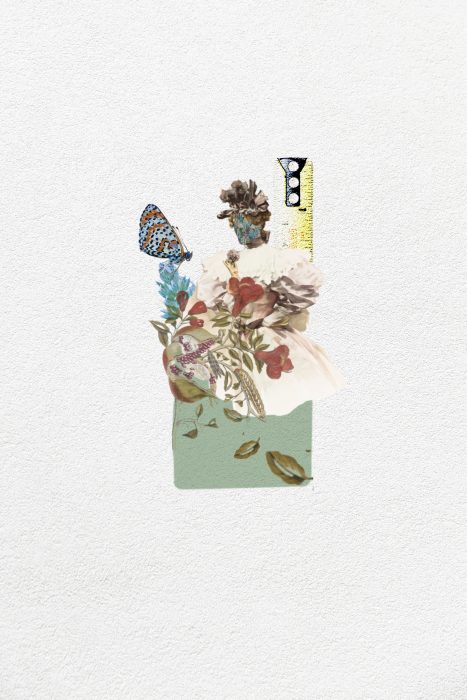
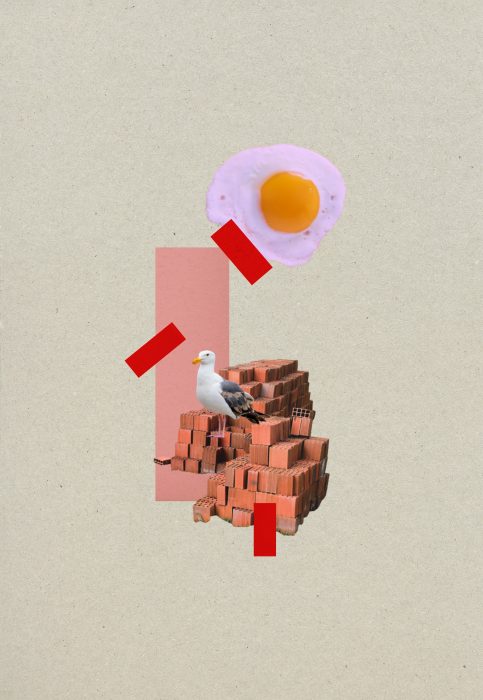
Cat McMahan: How do you recognize when one of your collages is truly “done”? Do you ever go back to pieces and add more or less to the collage?
AP: I`’m satisfied with a collage, when the theme is communicated using as little visuals as possible. I tend to initially overcrowd the paper, so I end up removing pieces, until each remaining visual element has a clear contribution toward the main theme. After I settle on the final elements, I play around with the composition and add finishing touches, such as adjusting opacity. Then I consider it finished. However, it can happen that I go back to an older collage and spot imperfections, such as having too many colors. Ever so often, I come across an image that is a better fit for a collage than what I had on hand previously. In the case of a digital collage, I can usually delete the previous element and add the new one without much hassle. So in other words, it can be a long time until a collage is done.
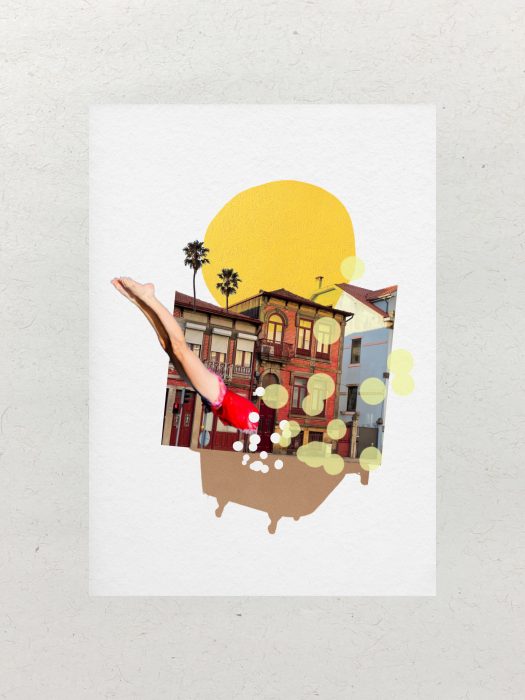
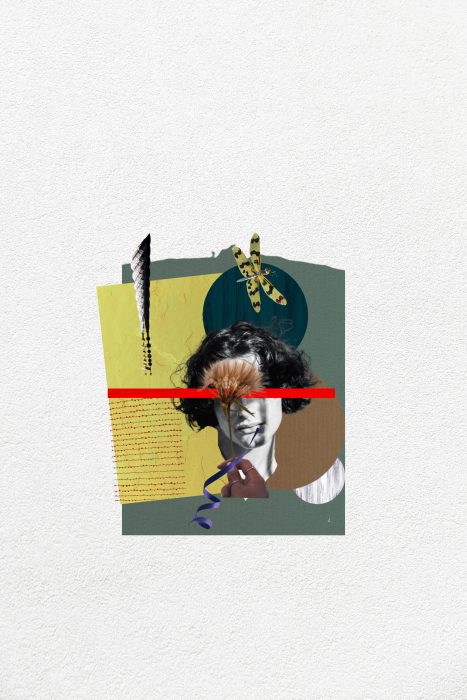
Heather McCabe: Looking at your collages, I’m struck by the way light seems consistent despite the clashing materials and sources–how do you think of light and shadow as you assemble a collage?
AP: With some collages, such as those using vintage photos, the image in the foreground that represents the main theme, is edited to be slightly brighter than the other layers. Given the quality of older images, it seems necessary to rely on tonal contrast to distinguish between the main theme and ancillary elements. However, with most of my collages, I don’t feel it is necessary to change the light too much. This is because each visual element has been chosen to complement the main image, rather than compete with it.
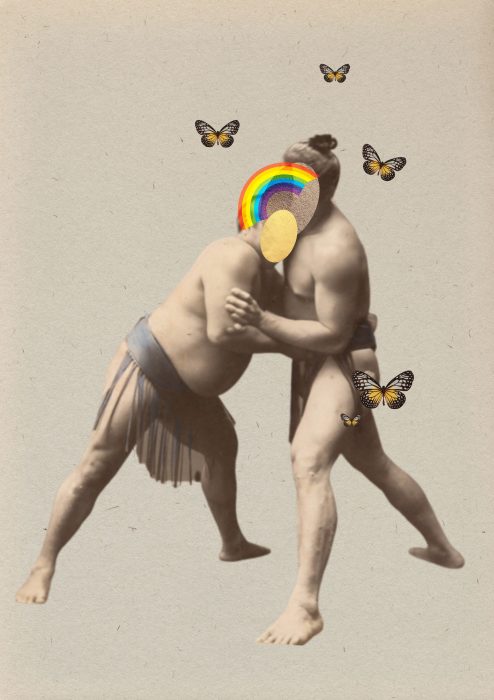
HM: I’m curious about shape and frame: do you build outward from the middle or do you impose a frame shaping that you then attempt to fill? How does this directional construction influence the narrative of each piece?
AP: When I work with paper, I start with a main image, or image cluster, in the center and build around it. With digital collages, my first focus is the front layer, where I combine the main images. Once I’m done, I save it and go to work on the background layers. It can be as simple as choosing a shape and a color to frame the main images— for example a blue square. Or it may include several elements, for example the sun setting behind palm trees, with a flock of birds flying past the trees.
With analog collages, I am limited in terms of the complexity of background layers I can create. I may lift up the main cluster of images carefully and add a piece of paper in the background, but that is about it. Unlike digital collages, I can’t edit things like colors and opacity levels. As a result, paper collages to me have a more decorative feel to them. On the other hand, adding textural elements, like a piece of ribbon, makes the collage feel more dynamic and blurs the line between decorative and fine art.
With digital collages, I work with a photo editing program that makes it easy to experiment around, for example by changing proportions. However, having so many options can be overwhelming. In the end, I have to justify the choices made and consider how they fit within the intended theme.
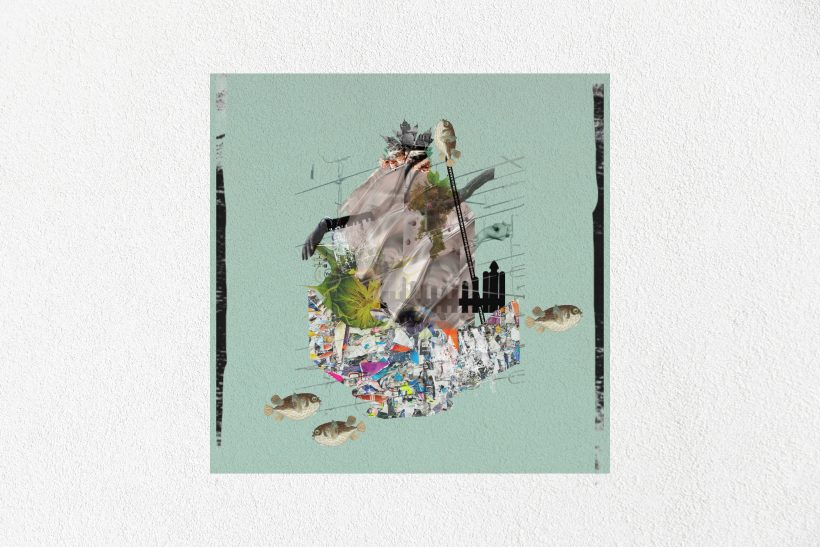
AK: There is a playful, energetic quality to your work – what inspires this? Are there any sources or artists you draw upon?
AP: Although I don’t have specific artists I draw from; I`m constantly inspired by music, writing and art that addresses relatable, or topical issues. Fairy tales are a great source of inspiration. I’m inspired by individuals and organizations that help animals in peril, such as Jane Goodall and Animals Asia. I also love to pay homage to those who came before us and highlight how much life has changed in the last hundred years.
Lastly, the collage artist community on Instagram has been incredibly helpful in inspiring new work. There are regular challenges one can participate in, such as Paris Collage Collective`s weekly challenges. While it can be a little daunting to work with images I have no connection to, it is a good way to stretch my comfort zone and discover new landscapes I can work within.
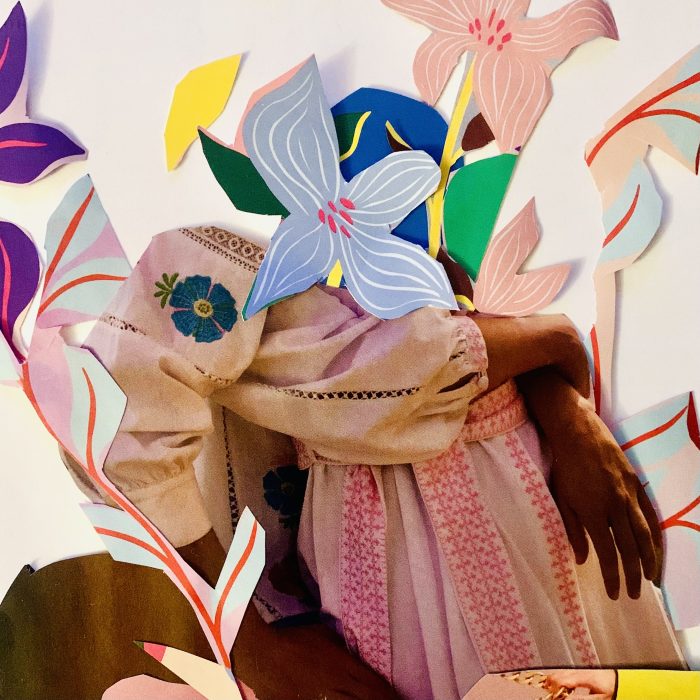
AK: I was drawn to the colorful, humorous juxtapositions in your work: a seagull perches beside a sunny-side-up egg, sumo wrestlers grapple among rainbows and butterflies, boys prepare to jump into a pool of blueberries. Is there an ideal reaction you hope to see your art evoke in viewers?
AP: As life can be unpredictable and messy, it feels vital to highlight the beauty around me and put a hopeful, humorous spin on things. As you mentioned with the blueberry pool and sunny-side-up egg-sun, I enjoy tapping into things that elevate me — which includes delicious food. I like to think that some viewers will also feel uplifted by these collages.
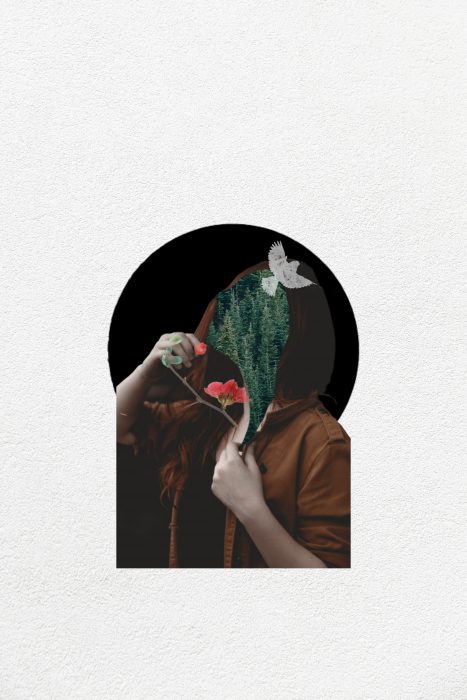
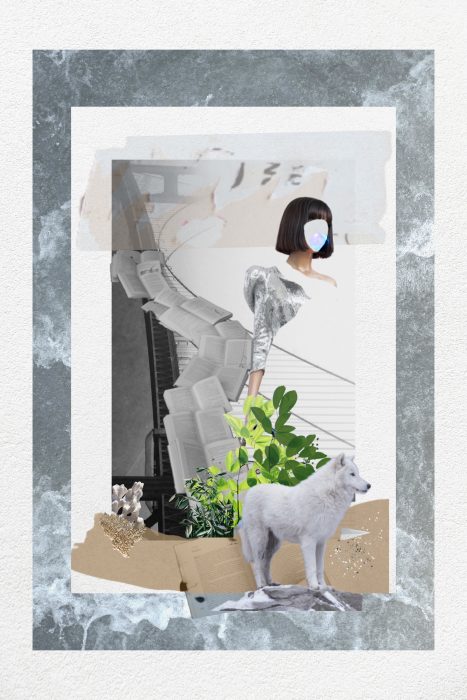
You can find more original artwork by Ana Prundaru on Instagram at https://www.instagram.com/nomadingart/
Ana Prundaru was born in Romania and presently lives in Switzerland. Alongside her legal career, she writes and illustrates for publications like Third Coast, Kyoto Journal, and New England Review.
